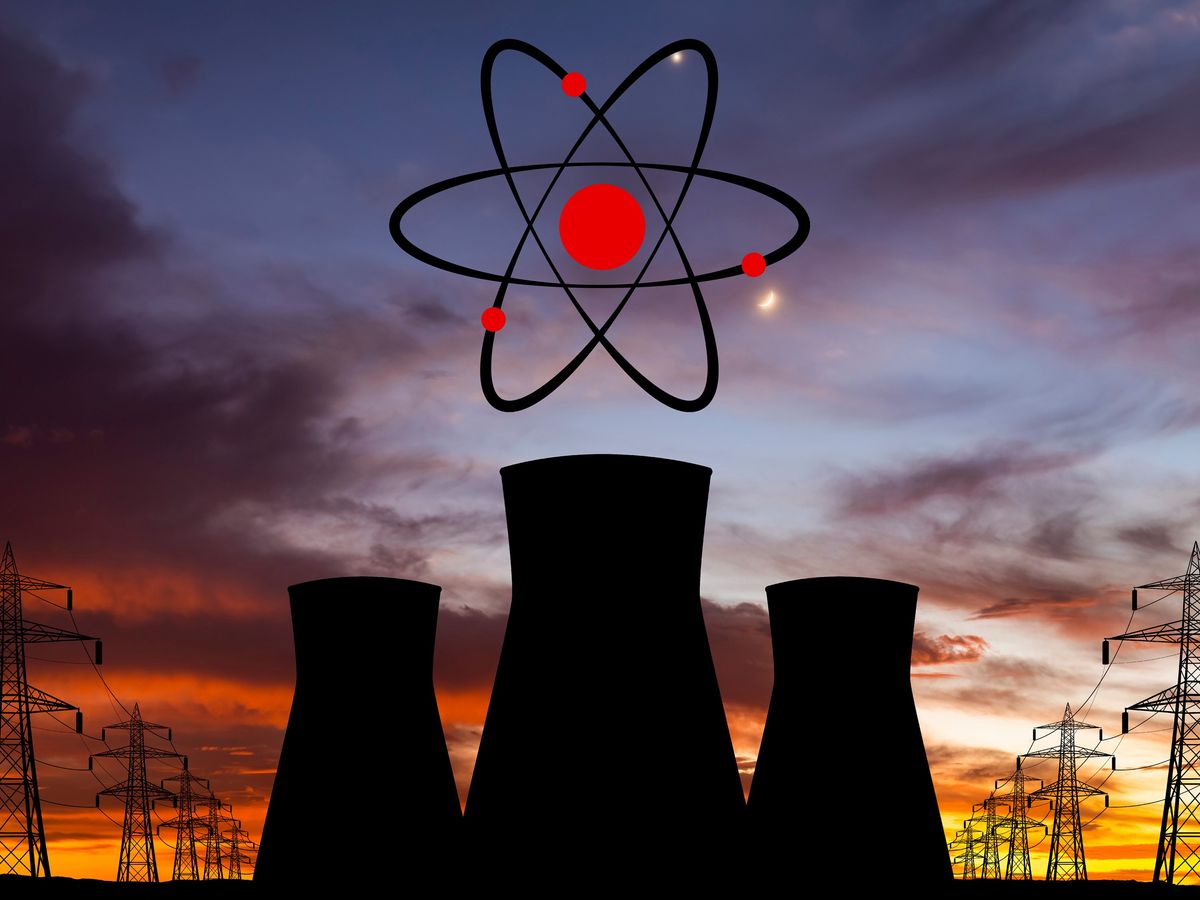Nuclear power, whose proponents have so often felt pushed to the margins of climate policy, is now firmly at the center of the climate conversation. At last month’s United Nations climate summit (known as COP28), 22 countries pledged to triple 2020’s nuclear energy capacity by 2050.
Meeting this dramatic goal will require the world to build new nuclear power at an unprecedented pace. But even if the world falls short of meeting the capacity numbers, the target’s real value may lie in spurring the world to embrace nuclear fission as one of many solutions for decarbonizing the grid.
Making good on the pledge will be a huge challenge. In 2020, nuclear power accounted for around 370 gigawatts of electrical capacity; that’s roughly 10 percent of the globe’s total electrical capacity. That global nuclear capacity has been flat since the mid-2010s.
To meet the goal of 1,110 GW in 2050, the world must break that trend and add new fission reactors at an unprecedented rate. “There’s no historical trend we can point to,” says Seaver Wang, an energy analyst at the Breakthrough Institute.
A recent report from the International Atomic Energy Agency (IAEA), released before COP28, outlined two scenarios for the nuclear industry extending out to 2050. Under ongoing trends—assuming that the world continues depreciating old reactors and building new ones at today’s sluggish pace—the IAEA estimates that nuclear capacity will rise to 458 GW.
But in a better-case scenario—assuming that new plants open at an accelerated rate and authorities avoid decommissioning plants if possible—the IAEA predicted that the capacity could rise to 890 GW by 2050.
So the 1,110-GW goal is beyond even the most optimistic scenario imagined by the global authority on the nuclear industry. But “the same could be said of a lot of clean technologies in this energy transition,” says Wang, “whether it’s the envisioned deployment of electric vehicles or countries’ pledges to triple renewable energy development by 2030. In many cases, it’s requiring countries to do what they’ve never done before.”
What’s happening with nuclear around the world?
There are some glimmers of hope. China, which plans to approve the construction of six to eight new reactors per year in the near future, is on pace to triple its own nuclear capacity by 2050. Additionally, China is building Linglong One, the only small modular reactor currently under construction in the world.
But China alone will not meet the global goal. Nor will Russia, active as it may be in building nuclear power abroad in countries like Bangladesh. Meeting the goal will require countries that are building only one or two reactors today, or even none at all, to change their tack drastically.
Making change is a societal challenge. “We have to, first of all, really work hard across the board,” says Judi Greenwald, executive director of the Nuclear Innovation Alliance. “Specifically, what working hard in the nuclear energy context looks like is a mix of actions by lots of different players.”
At the head of her to-do list: streamlining regulatory approval, as regulations are a familiar obstacle for any nuclear project. Governments will need to improve processes both for approving new builds of existing reactor designs and for approving new designs, such as the U.S. Nuclear Regulatory Commission’s contentious Part 53 rule regarding licensing advanced reactors.
Wang describes what else needs to happen. New nuclear projects must be built on time and on budget: a challenge when even projects in nuclear-friendly France face cost overruns. Supply chains for fuel and equipment must be crafted, often from scratch; workforces must be cultivated to build and operate plants. Last and certainly not least, the international nuclear nonproliferation framework can’t get in the way of enabling countries to build nuclear plants for the first time.
And old nuclear plants must be preserved for as long as possible, says Wang. The example of Germany, which shut down its last nuclear power plants last year even while extending the lifetime of coal plants, cannot be repeated elsewhere. “Lifetime extensions are a huge make-or-break factor in being able to achieve this target,” he says.
The 1,110-GW goal is beyond even the most optimistic scenario imagined by the global authority on the nuclear industry.
Even if all those actions are taken, the world might still fall short. But in the end, it might not matter—so long as nuclear power plays its part in decarbonizing the world’s energy grid. “The overarching pledge that’s most important is that we have to get to net zero by 2050,” says Greenwald. “We need basically everything we can get to throw at this problem.”
At the end of the day, COP pledges are non-binding commitments: symbols on paper. The symbolism of the pledge to triple nuclear capacity may be its most significant part, showing that the world is ready to embrace nuclear.
“This is a nuclear-specific pledge—a recognition of nuclear’s role in fighting climate change—that would not have been politically thinkable five years ago,” Wang says. “I think, as much as one can sort of belittle this pledge as being maybe overly ambitious and ultimately symbolic, it is a reflection of how far things have come.”



